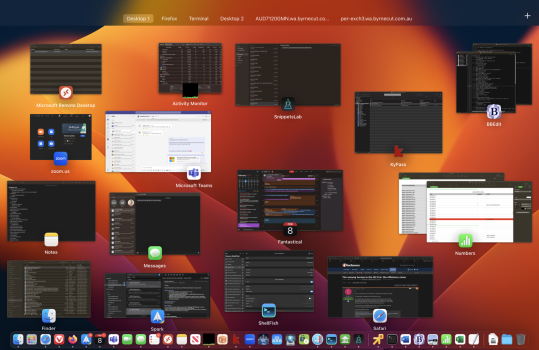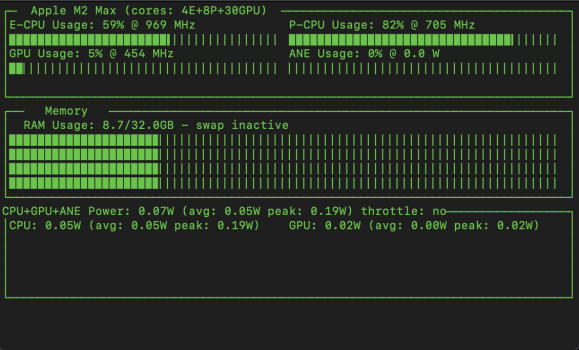Hi.
I've run a few tests on my new MBP 14'' with the low-end M2-Pro (10 core).
I'm particularly impressed with the efficiency cores!
In a compile test using clang to compile an Open Source project, I found
that doing a parallel build with the 4 efficiency cores takes ~ 6 times longer
than the same build with the performance cores, but uses just ~ 1/43 of the
average power (CPU power measured with powermetrics).
In other words, to complete the same task, the efficiency cores used just
14% of the energy the performance cores used.
Some more details are here:
 1006.org
1006.org
-- Chris
I've run a few tests on my new MBP 14'' with the low-end M2-Pro (10 core).
I'm particularly impressed with the efficiency cores!
In a compile test using clang to compile an Open Source project, I found
that doing a parallel build with the 4 efficiency cores takes ~ 6 times longer
than the same build with the performance cores, but uses just ~ 1/43 of the
average power (CPU power measured with powermetrics).
In other words, to complete the same task, the efficiency cores used just
14% of the energy the performance cores used.
Some more details are here:
Energy-efficient computing
Ok, so here’s yet another set of benchmarks on the new M2 Pro CPU. Apple has doubled the number of efficiency cores from 2 to 4 in the M2 family and this caught my …
-- Chris



